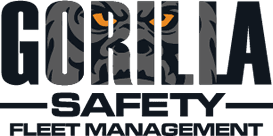
As of December 2015, the Federal Motor Carrier Safety Administration (FMCSA) adopted their Final Rule on Electronic Logging Devices (ELDs). The concept of the ELD was born as part of the Moving Ahead for Progress in the 21st Century (MAP-21) bill passed by Congress back in 2012. The bill mandated that the FMCSA establish rules for ELDs for commercial drivers and fleets by 2015.
What are Electronic Logging Devices?
Electronic Logging Devices allow drivers to electronically record their Record of Duty Status (RODS) and replace the paper logbook traditionally used by drivers to record their compliance with the Hours of Service (HOS) requirements. ELDs track the HOS electronically while also being a part of the hardware connection of a commercial truck to synchronize with the engine and monitor driver behavior such as speeding, idling, and hard braking.
Electronic Logging Devices can be configured to monitor other types of data such as Driver Vehicle Inspection Reports (DVIR) and IFTA reporting. They can also be set up to pass on information to safety and fleet managers in the form of logs in almost real-time. These systems all reduce paperwork, keep dispatchers current on a driver’s status and lessen the hassle for drivers of keeping up with paper logs.
Some companies implemented the Automatic On-Board Recording Devices (AOBRD) to reduce paperwork prior to the ELD ruling. Because these systems automatically record a driver’s duty status and the time they’re operating a vehicle, they can continue to be used for an additional two years after the compliance date for commercial trucking companies to implement ELD equipment.
What is the FMCSA Final Rule?
The Final Rule, adopted by the FMCSA, gives specific information regarding the implementation of ELDs for drivers and companies:
Fleets and drivers still using paper logbooks have two years from December 2015 to switch to an ELD system. To ensure this implementation is not cost prohibitive to companies, systems using smartphones and mobile device equipment can be utilized assuming they meet all FMCSA requirements, including a hardware connection to the truck’s engine. The Gorilla Safety app meets all FMCSA requirements.
The ruling prohibits commercial driver harassment from the information gathered by the Electronic Logging Device. In a separate rule, the FMCSA also protects drivers from being coerced into violating federal safety recommendations.
It sets technological standards to make it easier to choose and compare appropriate equipment and systems – like the Gorilla Safety app.
New HOS document requirements have also been established, further reducing paperwork for drivers and companies.
While changing and adjusting to a new system may seem like a hassle, once in place, ELDs will make driving and maintaining documentation easier for both the drivers as well as the companies responsible for them and their trucks. Gorilla Safety is here to help you manage your fleet more efficiently and with better results. Contact us today to learn more.

